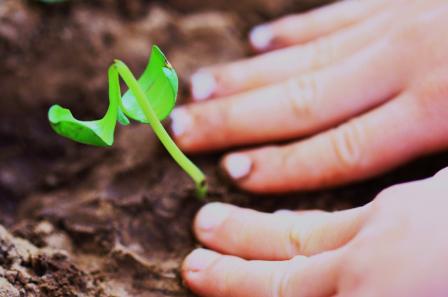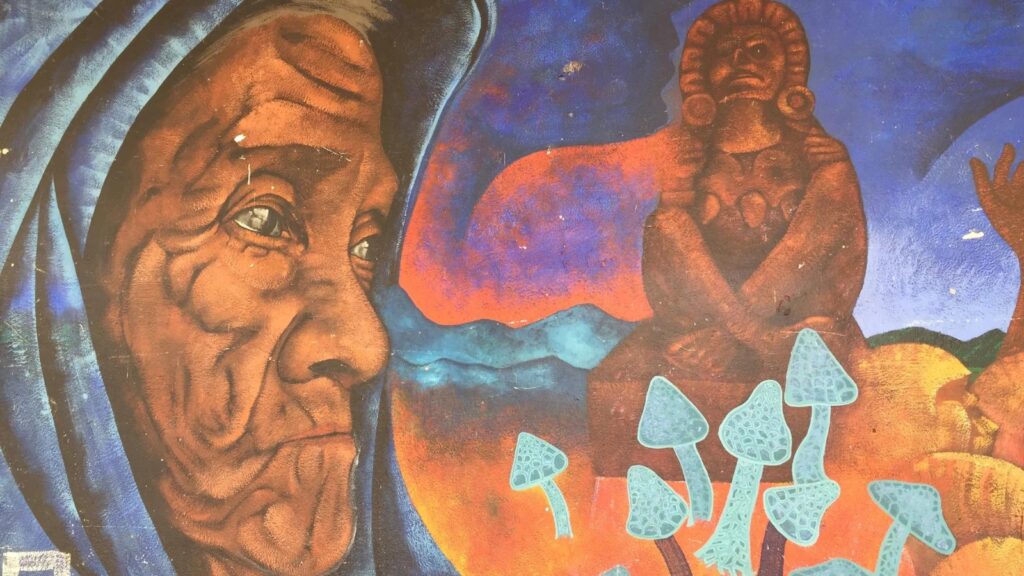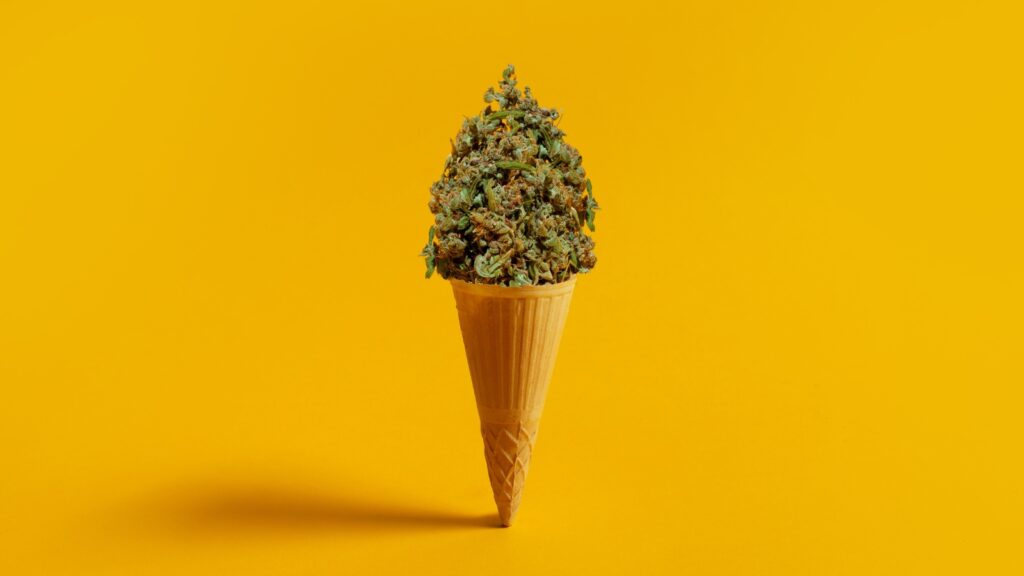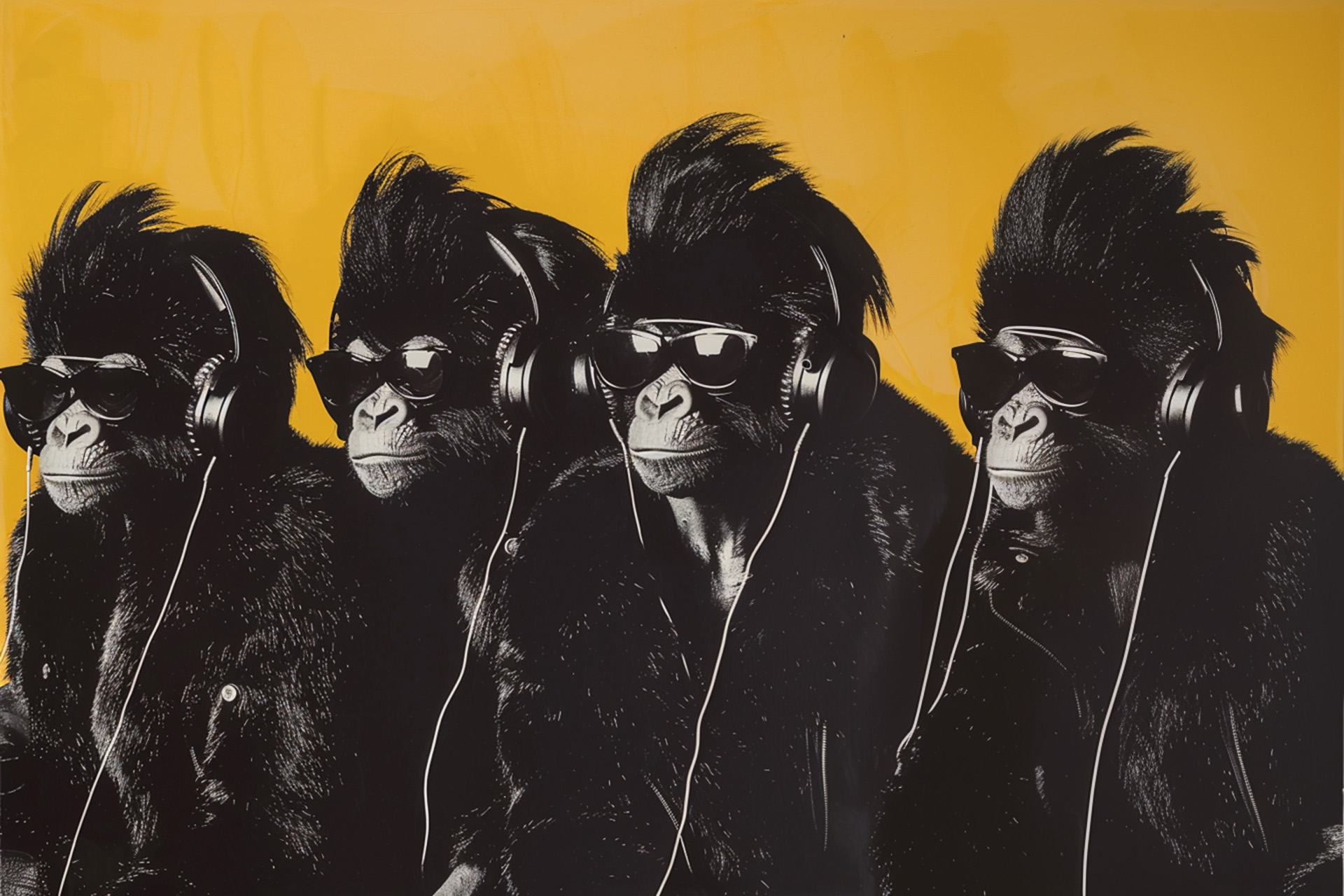The following is the keynote speech from Stream III, “The Generative Logic of the Commons,” of the International Conference on the Commons, Berlin, Germany, Oct. 31 – Nov. 2, 2010.
I will present my talk in the form of ten assertions about abundance and its relation to the commons. Some of the ten are quite obvious and uncontroversial. Others may provoke intense debate. Hopefully, they can help clarify the issues covered by this conference.
1: The Internet is creating an abundance of information and knowledge
This is hardly news by now. New technologies have made possible a global digital infrastructure, which, in turn, has given rise to a new information economy. This economy has one obvious feature: the abundance of free or low-cost information and knowledge. With few exceptions, I usually find a needed piece of information, skill or knowhow — if it is public knowledge — on Wikipedia, YouTube, a blog, a Web site, or a mailing list somewhere.
Disturbing issues remain, such as inappropriate content, unaffordability, exclusion, embedded value systems, toxic production and e-wastes. But if we are looking for abundance, the Internet definitely has it. To turn this wealth of information into wisdom though, users have to pick true from false, grain from chaff.
2: The abundance concept is even more neglected than the commons
The commons concept was denigrated for decades by mainstream social scientists who thought that all commons inevitably collapsed. They made the “tragedy of the commons” a sound-bite. However, the need to manage threatened global commons like the atmosphere, the oceans and biodiversity and the rise of Internet-based commons forced a second look at the rich literature on this topic. The 2009 Economics Nobel Prize award to Elinor Ostrom for her work on the commons put the concept back on the mainstream.
Abundance is even more neglected. The most fundamental assumption in economics is scarcity. This, in effect, assumes away abundance. Thus, most mainstream economists are not prepared to deal with abundance. They have few concepts that explain it. They have no equations that describe it. Confronted with it, they fall back on inadequate theories based on scarcity.
The growth of the information economy, however, has made it imperative to deal with the phenomenon of abundance. Unlike the long history of commons research, studies of abundance are few; thus, we are just starting to build theories about it.
3: The wellspring of information abundance is the human urge to communicate
How did information goods become so abundant? For one, ideas grow — not diminish — with sharing. As Thomas Jefferson wrote: “Its peculiar character … is that no one possesses the less, because every other possesses the whole of it. He who receives an idea from me, receives instruction himself without lessening mine….” Also, digital technology has further lowered the cost of exact copies over any number of generations, leading to a marginal cost of almost zero. “Too cheap to matter,” as Wired editor-in-chief Chris Anderson puts it. Furthermore, it does seem that “information wants to be free”. Something is driving it to multiply. This driving force, I suggest, is the human urge to acquire and exchange knowledge. We did so when it cost much. We will certainly do so even more, now that sharing costs practically nothing.
On the Internet, we can fully express the primal human urge to communicate. This is why we have information abundance.
4: A second wellspring of abundance is the urge in every living organism to reproduce
Nature's abundance is hard to miss: bacteria can double their numbers every half hour; some plants release a million pollen in a single day; a fish can release one to ten million eggs in one breeding season; one rice grain can produce a thousand grains within a planting season. (Even pets with five to seven litters a year are more than most of us can handle!) In seas, lakes, swamps, grasslands, forests, and other ecosystems — abundant life blooms. Where they do not anymore do so, something must have upset the natural abundance. Even such damaged ecosystems, if left alone, soon teem with life again.
While abundance in nature can last indefinitely, it does not grow without limit. As species multiply, they soon settle into balance with other species and the natural environment. The food chain of plants, herbivores, carnivores and other predators, and decomposers such as arthropods, fungi and bacteria becomes webs of material and energy cycles and exchanges, highly-productive ecosystems that provide us perpetual streams of natural income — new soil, clean air, food, materials for clothes and houses, medicine, fuel, industrial inputs, a thousand other goods and services and psychic rewards too.
The generative logic we see in many commons, I suggest, comes from these inner logic of sharing in humans and reproduction in living organisms.
5: The massive bulk of water, carbon, iron, silicon and other minerals on Earth as well as energy from the sun are also wellsprings of abundance
The Earth's mineral abundance is non-renewable and must be managed differently from renewable solar energy.
As oil production peaks, for instance, cheap abundant oil will soon come to an end. Peak oil should teach us an unforgettable lesson in abundance management. Those who miss the lesson will go for more coal, nuclear power and agrofuels. Those who get it will shift to clean renewables, energy efficiency and planned “descent”. Transition towns are already leading the way.
Solar energy makes possible other abundant energy sources such as water, wind and wood. In 2009, renewables supplied 25% of total world energy capacity, thanks in part to China's surging interest in biogas, wind power and photovoltaics. Germany, too. Photovoltaics are made from semiconducting silicon, the material base of the digital revolution. (Do you recall how expensive LCD projectors were ten years ago?) If photovoltaics follow similar plunging price trends as other digital goods, we can look forward to a Solar Age soon. Hydrogen from water also promises another abundant energy source.
In passing, let me cite one more wellspring of abundance: webs of positive human relationships in caring communities, which generate feelings of peace, contentment, love, happiness and other psychic rewards which defy quantification.
6: Abundance creates commons
I have now identified several archetypes of abundance. All these archetypes have created commons. (“Question: before refrigerators, what did people do when they had too much food? Answer: they threw a party!” ) Human societies learned early on to deal with abundance — including temporary ones — from forests, rivers, and other hunting and gathering areas by managing them as commons. Taken for granted for a long time, the oceans, the atmosphere, and other global commons are just getting due attention. Likewise, the creative commons of information, knowledge and culture are now getting renewed attention with the rise of the Internet which, by the way, has become a great showcase of both the concepts of commons and abundance (and their problems, too).
Markets and governments are also public spaces. Therefore, rather than dismiss them outright as completely anathema to the commons, should we not try to reorient them, to be managed as commons? (After all, public markets and village meetings still show features characteristic of commons. Perhaps, we should see the failures of markets and governments — the financial bubbles in the West or the communist collapse in the East, for instance — as the real tragedies of the commons, from which valuable lessons can be drawn.)
7: Under conditions of abundance, reliability becomes more important than efficiency
Efficiency — maximizing gain and minimizing waste — is very important when resources are scarce. It has been the focus of mainstream economics.
But when resources are abundant, efficiency recedes in importance. Some biological processes are “wasteful”, like releasing millions of sperm although only one will actually fertilize an egg. As hardware became cheaper, electronic designers have likewise learned to put integrated circuits, processing power, storage, and bandwidth to uses considered wasteful years ago.
It often makes sense to give up some efficiency to ensure the continuity of abundance. Among engineers, we call a process that seldom fails “reliable”. This term has familiar equivalents. A process that lasts indefinitely is called “sustainable”. Since future generations can enjoy the same abundance that we are enjoying, sustainability also means “intergenerational equity”. A process that benefits only one sector of society is not reliable because it fails for the other sectors. If all sectors benefit, then we have “social justice” or “equity”. For high reliability, we need to minimize any risk that can cause a failure of abundance; this sounds like “risk-aversion”, or the “precautionary principle”.
In short, reliability means ensuring that the fruits of abundance are enjoyed without fail by all social sectors, our generation, as well as future generations. We optimize it by putting risk-reduction ahead of gain accumulation. If abundance is a goose that lays golden eggs, we'd rather ensure that the goose stays fit and alive, than force it to lay two eggs instead of one each day.
8: We can learn to make one abundance lead to another and create cascades of abundance
People with access to land often stay poor simply because they have forgotten how to tap and build on the abundance that nature lays at their feet. Beyond tapping existing abundance and making it last indefinitely, we can learn to recognize the conditions that generate each archetype, so that we can subsequently create cascades of new abundance. To cite examples: the System of Rice Intensification (SRI) improves yields dramatically; permaculture creates through conscious design a self-regenerating “forest” of food and cash crops; remineralization rejuvenates our soils; biodynamic farming taps distant forces to raise the quantity and quality of farm produce.
On the Internet, the original protocols have spawned cascades of abundance. First came mailing lists, download sites and home pages; then the search engines; other innovations followed, such as blogs, wikis, video sharing sites, and social networking portals, with no end in sight.
Creating cascades of abundance is hardest in the industrial sector because its substantial material and energy needs (and wastes) tend to disrupt ecological systems. If industrial processes could be turned into closed material loops fuelled by renewables, this may yet provide the key to cascading industrial abundance.
As we get better at cascading abundance, new commons will emerge that can provide our communities with even more continuous streams of goods, services, psychic rewards and other benefits.
9: Abundance spawns two contrary mindsets: monopolizing it for private profit-making, versus holding it in common for the good of the whole community and future generations
These two will compete for our minds. Which mindset will ultimately win is by no means clear.
An example in agriculture is the contest between farmers who share commonly-held seed varieties among themselves, versus multinationals who extract monopoly rents from their proprietary seeds through plant variety protection, patents, F1 hybrids, and the “Terminator” technology.
In the industries of the West, very little is commonly-held now; the corporate mindset holds sway. Curiously, however, the world's main source of industrial abundance today is China. which boasts of a huge but less dominant State sector, in precarious balance with a growing corporate sector, under the Communist party's schizophrenic ideology of “market socialism”.
In the information economy, user movements for copyright and patent exemptions, open access, free software and other forms of non-exclusivity have made big inroads in building commons of information techniques, tools and content for sharing. However, corporations and governments are trying to stem the tide of sharing by tightening IPR enforcement and through agreements like the GATT/WTO and the up-and-coming ACTA.
10: Corporations are undermining abundance held in common
Unfortunately, we created corporations and gave them life before Asimov drew up his Three Laws of Robotics. The First Law was: “A robot may not injure a human being or, through inaction, allow a human being to come to harm.” The Second: “A robot must obey the orders given it by human beings except where such orders would conflict with the First Law.” We would be much better off today if all corporations — which, like robots, are man-made automata — were constrained by these laws.
Our legal systems instead put into these business automata a single urge — to seek profits. This one-track mind has made them take over commonly-held sources of abundance — from seeds, to land, to knowledge — and turn these into monopolies because it is profitable to do so. What they could not take over, they have undermined or sabotaged, to create artificial scarcity. Corporations have destroyed the fertility of our soils, substituting commercial synthetics in their place; they have stopped the natural flow of mothers' milk in favor of commercial formula; they have bought out independent seed companies, to force-feed us with genetically-modified toxic foods, all in pursuit of profit. They have become, in Wolfgang Hoeschele's words, “scarcity-generating institutions”.
We conceded to corporations legal personhood, turning them into a de facto man-made species of business automata. They have become super-aggressive players in our political, economic, and social worlds. Beating us in our own game, they have taken over governments, economies, and media. Having become masters in domesticating Homo sapiens, they now house, feed, train and employ tamed humans to serve as their workhorses, pack mules, milking cows, watchdogs, stool pigeons and smart asses.
Thus, I will argue, corporations are now the dominant species on Earth. They routinely ignore human orders, injure human beings and foul up ecosystems in violation of laws for automata; these man-made mammoths now occupy the top of the food chain and have become the greatest threat to our well-being and the survival of many species on this planet.
—
Postscript
We face, it seems, three fundamental and interrelated challenges in the twenty-first century:
First, we must reacquire a species consciousness as Homo sapiens and reestablish our connections with the natural world. With our conscious mind, unique intelligence and creative powers, the human, says a new story of creation, is the Universe's way of looking at itself and appreciating its own beauty, origins, evolution and grandeur. For this, we carry a huge burden of responsibility to the rest of the living world, now dying under a great wave of extinctions.
Second, we must free ourselves from corporate control. This basically involves learning to keep ourselves healthy through the right natural environment, food and protection from the elements, and raising our young under the new mindset, without depending on corporations. We must rely instead on each other and on commonly-held sources of abundance we ourselves can build and maintain.
Third, we must reestablish control over corporations. This involves reprogramming them to obey Asimov's three laws for automata, and hunting down disobedient corporations. Eliminating the disobedient from the corporate gene pool is the first step in reclaiming our role as stewards of the natural world and masters of our own creations.
Given the powers of the corporate species, these are daunting tasks indeed. But they are also tasks worthy of Homo sapiens.
—
Further Commentary
The first assertion — that there's abundance of free or low-cost information and knowledge on the Internet — is obvious and uncontroversial, so I'll skip it.
The first assertion leads immediately to the second, that this information abundance is forcing a deeper look at the concept of abundance itself. Assertion 2 says that abundance is a neglected concept because mainstream economics assumes it away, by defining itself as a study of scarce resources. Thus, unlike the rich literature from the long history of commons research, we have few theories of abundance.
The rest of my talk is about a theory of abundance.
Assertions 3-5 identify sources or wellsprings of abundance. Elsewhere, I have also used the mechanistic term engines of abundance. These assertions lead to a typology of abundance. For more details, there's a book on display outside, entitled Access to Knowledge in the Age of Intellectual Property, which contains my longer piece “Undermining Abundance”. There's also Wolfgang Hoeschele's book on The Economics of Abundance.
Let's start with the wellspring of information abundance.
Think of a bottle (or a box). You can bottle water, food, air and most other goods for sale. If you use up the bottle's content, it's gone. That's scarcity. But drinking from a bottle of ideas will never use up the contents of the bottle. That's abundance.
Think of a curious child. It will touch, smell, taste, look at and listen to almost anything. And once it learns to talk, anything and everything bottled up in its mind will come out. It's an innate urge to absorb information and to communicate information. It's a universal human urge.
The Internet, in effect, offers a huge set of bottled ideas for the child in all of us, and each bottle keeps on giving… and giving… and giving…. That is why we have information abundance.
Think of DNA. They are also like bottled ideas. Mother Nature bottled these ideas into genes, cells, organisms and species, and put an intrinsic reproductive urge in every living organism, to spread one's DNA, to reproduce one's own kind.
That is why nature — and if we do it right, agriculture too — also keeps on giving… and giving… and giving… through balanced and highly-productive ecosystems that provide us with perpetual streams of natural income — new soil, clean air and water, food, stuff for clothes and houses, medicine, fuel, industrial inputs, and a thousand other goods and services, as well as psychic rewards too. Where life does not bloom abundantly anymore, something must have upset the natural abundance. Even these damaged ecosystems, if left alone, soon teem with life again.
The generative logic we see in many commons comes, I suggest, from the inner logic of sharing in humans and reproduction in living organisms.
The massive bulk of water and minerals on earth and energy from the sun are also wellsprings of abundance.
The earth's mineral abundance is non-renewable and must be managed differently from renewable solar energy. As oil production peaks, for instance, the era of cheap abundant liquid fuels will some come to an end. Peak oil should teach us an unforgettable lesson in managing bottles of goods that are used up. Those who miss the lesson will go for more coal, nuclear power and agrofuels. Those who get it will shift to clean renewables, energy efficiency and planned “descent”, as what transition towns are now doing.
One more wellspring of abundance: the webs of positive human relationships — acquaintances, friendships, family, community — which generate feelings of peace, contentment, love, happiness and other psychic rewards which defy quantification.
Each of these wellsprings of abundance creates an archetype — a distinct category — of abundance: information, biological, bulk, psychic, and so on.
Once we open our eyes to the potential abundance around us, their wellsprings, archetypes, etc., we can appreciate Assertion 8, that the possibility exists of making one abundance lead to another and of creating cascades of abundance.
People with access to land often stay poor simply because they have forgotten how to tap and build on the abundance that nature lays at their feet, or the wealth of knowledge humanity has accumulated over time. All of us must learn again to recognize abundance when it happens, to tap existing abundance, and to make it last indefinitely. We must learn to bring about the conditions that generate each archetype, so that we can create cascades of new abundance. In my paper, I cite some examples from agriculture and the Internet.
Creating cascades of abundance is hardest in the industrial sector, because its substantial material and energy needs tend to disrupt ecological systems. If industrial processes could be turned into closed material loops fuelled by renewables — just like ecological processes — this may yet provide the key to cascading industrial abundance.
Photovoltaics are made from semiconducting silicon, the elemental basis of the digital revolution. Six-thousand-dollar LCD projetors 10 year ago now cost less than a thousand. If photovoltaics follow similar plunging price trends as other digital goods, then we can create more cascades of new solar-based abunance and bring in a Solar Age.
As we get better at building balanced ecologies of agriculture, industrial and information abundance, our communities will enjoy even more continuing streams of goods, services, psychic rewards and other benefits.
So, if we have learned to recognize abundance, their generative logic, their archetypes, etc., if we have become better at creating new abundance and cascades of them, what next?
That's Assertion 6: abundance creates commons. Question: Before refrigerators, what did people do when they had too much food? Answer: They threw a party! As I said, Abundance creates commons. I will leave it to the experts here to tell us more about the commons.
We have now covered the paper's Assertions 1-5 on the archetypes of abundance, Assertion 8 on cascading abundance, and Assertion 6 on abundance creating commons. We are left with the more debatable Assertions 7, 9, and 10.
Suppose we are now wallowing in abundance — as we are of information on the Internet. We have the proverbial goose — many of them, in fact — that lays golden eggs. What next?
Assertion 7 raises one more neglected concept — like the concepts of abundance and commons — whose time has come, I think. This is the concept of reliability. It is an engineer's term. You might be more familiar with the related social concepts: “sustainability”, “equity”, “risk-aversion”, and the “precautionary principle”.
The goal of reliability is to minimize the risk of failure. It tries to make abundance last indefinitely, without failing. Assertion 7 says that under conditions of abundance, reliability — that is, reducing the risk that abundance will fail — becomes more important than efficiency. Efficiency — meaning, maximizing gain and minimizing waste — is very important when resources are scarce. This has been the focus of mainstream economics. But when resources are abundant, efficiency recedes in importance. When nature releases millions of sperm, although only one will fertilize an egg, it is after minimizing the risk of failure, not minimizing waste. It is after reliability, not efficiency. We'd rather ensure that the goose stays fit and alive, than force it to lay two golden eggs instead of one everyday.
We are now left with two remaining assertions, 9 and 10.
I said earlier that abundance creates commons. Unfortunately, pooling resources in common is not the only mindset that abundance spawns. Assertion 9 says that abundance spawns two contrary mindsets: holding its source in common is great for the whole community and for future generations, but monopolizing it is great for private profit-making.
Two contrary mindsets: commons or monopoly.
An example in agriculture is the contest between — one — farmers who share commonly-held seed varieties among themselves, versus — two — multinationals who extract monopoly rents from their proprietary seeds through plant variety protection, patents, F1 hybrids, and the “Terminator” technology.
In the industries of the West, very little is commonly-held now, and the monopolistic mindset holds sway. A curious exception, however, is the world's main source of industrial abundance today — China — which boasts of — one — a huge but less dominant state sector, in precarious balance with — two — a growing corporate sector, under the Communist Party's schizophrenic ideology of “market socialism”.
In the information sector, users movements — one — for copyright and patent exemptions, open access, free software and other forms of non-exclusivity have made big inroads. However, corporations and governments — two — are trying to stem the tide of sharing by tightening IPR enforcement and through agreements like the GATT/WTOP and the up-and-coming ACTA.
So, two mindsets: one, commons and two, monopoly.
There's a third mindset, actually. If abundance spawns two mindsets, scarcity spawns three: commons, monopoly, and competition. I think the dynamics between these three will define the economics of the 21st century.
The main carriers of the monopoly mindset are business firms organized as corporations. I talked earlier about urges: the human urge to communicate, and the biological urge to reproduce.
Our legal system also put an urge into corporations. It's a single urge — to seek profits. This one-track mind has made them take over commons of abundance — from seeds, to land, to knowledge — and turn these into monopolies because it is profitable to do so. What they could not take over, they have undermined or sabotaged, to create artificial scarcity. Corporations have destroyed the fertility of our soils, substituting commercial synthetics in their place; they have stopped the natural flow of mother's milk in favor of commercial formula; they have bought out independent seed companies, to force-feed us with genetically-modified toxic foods, all in pursuit of profit. They have become, in Wolfgang Hoeschele's words, “scarcity-generating institutions”.
Unfortunately, the corporations came in before Isaac Asimov's Three Laws of Robotics. In the 1950s, when robots were mostly figments of imagination of science fiction writers, Asimov wrote the novel, I Robot, where he laid down the three laws, to ensure that intelligent, man-made automata did not take over the world and enslave humankind.
The First Law was: “A robot may not injure a human being or, through inaction, allow a human being to come to harm.”
The Second Law: “A robot must obey orders given it by human beings except where such orders would conflict with the First Law.”
The Third Law is about self-preservation, without conflicting with the First or Second Laws.
We would be much better off today if all corporations — which, like robots, are man-made automata — were constrained by these laws. But when we granted legal personhood to corporations, turning them into a de facto man-made species of business automata, we built into them not the three laws for automata but the single urge to seek profits. Corporations have since confirmed the science fictionists' worst fears about runaway automata.
They have become super-aggresive players in our political, economic and social worlds. Beating us in our own game, they have taken over governments, economies and media. They have become masters in domesticating Homo sapiens. They now house, feed, train and employ tamed humans to serve as their workhorses, pack mules, milking cows, watchdogs, stool pigeons, and smart asses.
Assertion 10 argues that corporations are now the dominant species on Earth. They routinely ignore human orders, injure human beings, and foul up ecosystems, in violation of laws for automata. These man-made mammoths now occupy the top of the food chain and have become the greatest threat to human well-being and the survival of many species on this planet.
With our conscious mind, unique intelligence, and creative powers, Homo sapiens, says a new story of creation, is the Universe's own way of looking at itself, of appreciating its own beauty, origins, evolution and the grandeur of it all. Thus we carry a huge burden of responsibility not only to the living world, but to the whole universe as well.
We face, I believe, three fundamental and interrelated challenges in the 21st century:
First, we must reacquire a species consciousness as Homo sapiens, and reestablish our deep connections with the natural world.
Second, we must free ourselves from corporate control. To do so, we must each learn not to depend on corporations to keep ourselves alive and healthy, and not to depend on corporations to educate our young. We must instead rely on each other and on sources of abundance we ourselves can build, maintain and hold in common.
Third, we must reestablish control over corporations. This involves reprogramming them to obey Asimov's three laws for automata or their equivalents. It also involves — as we did against big prehistoric predators — hunting down disobedient corporations and disbanding, bankrupting or otherwise eliminating them. Taking out the disobedient from the corporate gene pool is the first step in reclaiming our role as stewards of the natural world and masters of our own creations.
—
Recommended readings on abundance:
Dugger, William and James Peach. Economic Abundance: An Introduction. M.E. Sharpe, New York: 2009.
Hoeschele, Wolfgang. The Economics of Abundance: A Political Economy of Freedom, Equity and Sustainability. Gower Publishing, Surrey, England: 2010.
Verzola, Roberto. “Undermining Abundance: Counterproductive Uses of Law and Technology in Nature, Agriculture and the Information Sector” in Krikorian, Gaelle and Amy Kapczynski (eds.). Access to Knowledge in the Age of Intellectual Property. Zone Books: 2010. Full text available at http://rverzola.files.wordpress.com/2008/11/verzola-on-abundance1.pdf
_____________. “Challenging Media: Poverty Amidst Abundance”. Media Development (January 2008). Full text available at http://rverzola.files.wordpress.com/2008/03/media-poverty.pdf
_____________. “21st Century Political Economies: Beyond Information Abundance”. International Review of Information Ethics (Vol. 11 – October 2009). Full text available at http://www.i-r-i-e.net/issue11.htm
_____________ . Towards a Political Economy of Information. Constantino Foundation, Quezon City: 2004. Full text available at http://rverzola.wordpress.com/2008/01/26/towards-a-political-economy-of-information-full-text/
Image by Pink Sherbet Phototography, courtesy of Creative Commons license.









